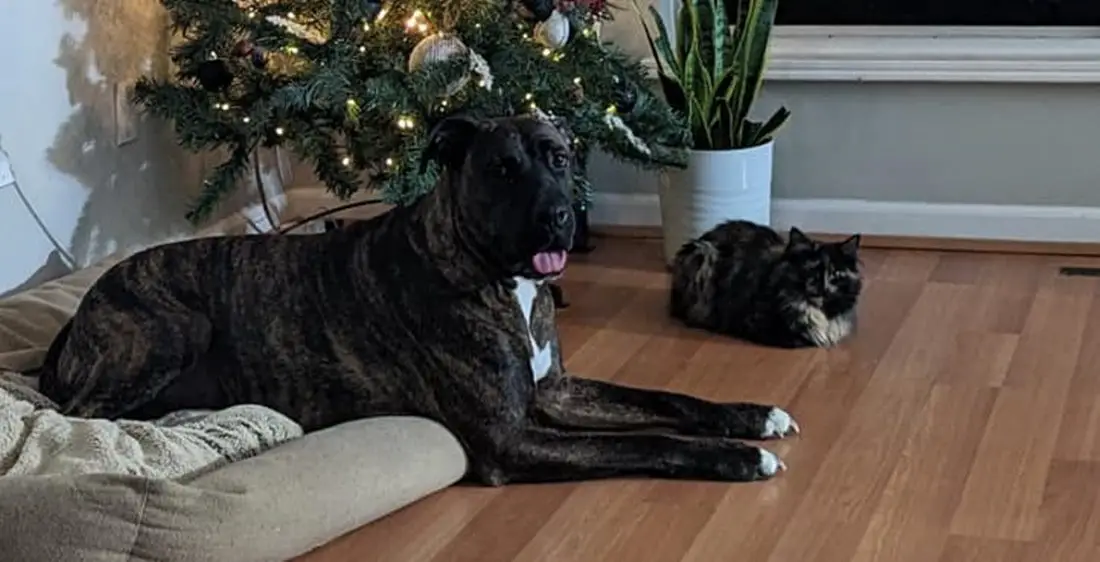It’s the middle of the night and you hear your dog throwing up. You rush to their side and find that they ate a piece of wood from the furniture. What do you do now?
In this blog post, we will discuss what to do if your dog ate wood and is throwing up. We will provide you with a definitive guide on how to handle this situation. Stay safe, and good luck!
If your dog has ingested wood and is experiencing vomiting, diarrhea, loss of appetite, lethargy, and pain while swallowing or drooling excessively, it’s important to seek veterinary care immediately to prevent possible gastrointestinal bleeding or blockage.
What To Do If Your Dog Ate Wood And is Throwing Up
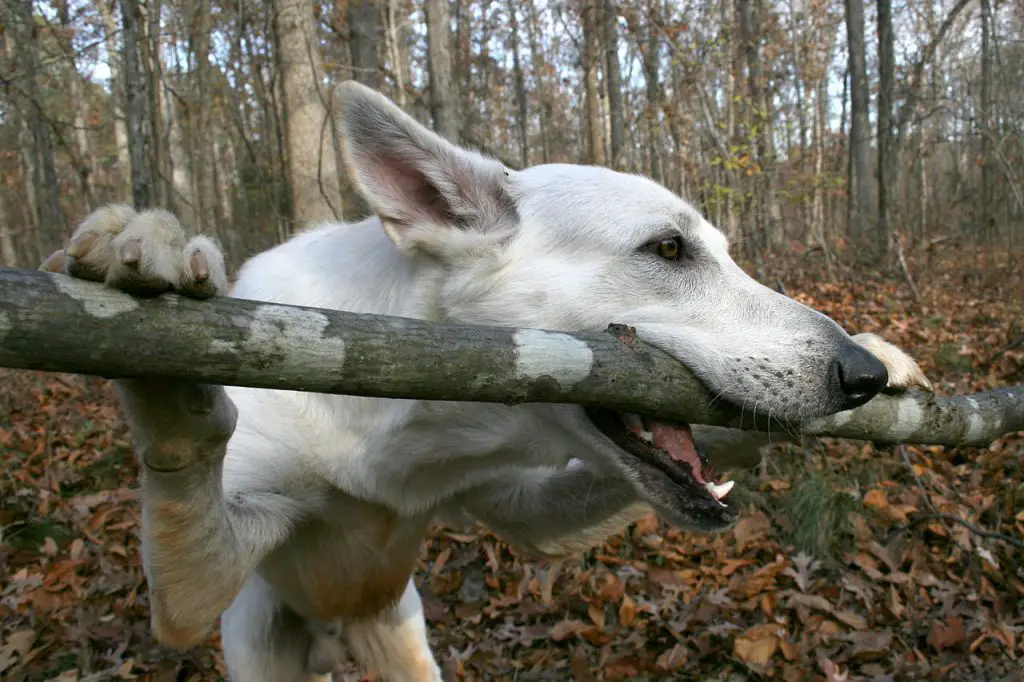
If your dog has ingested wood and is throwing up, immediate action and veterinary consultation are necessary to ensure their safety and well-being.
Assess the Situation
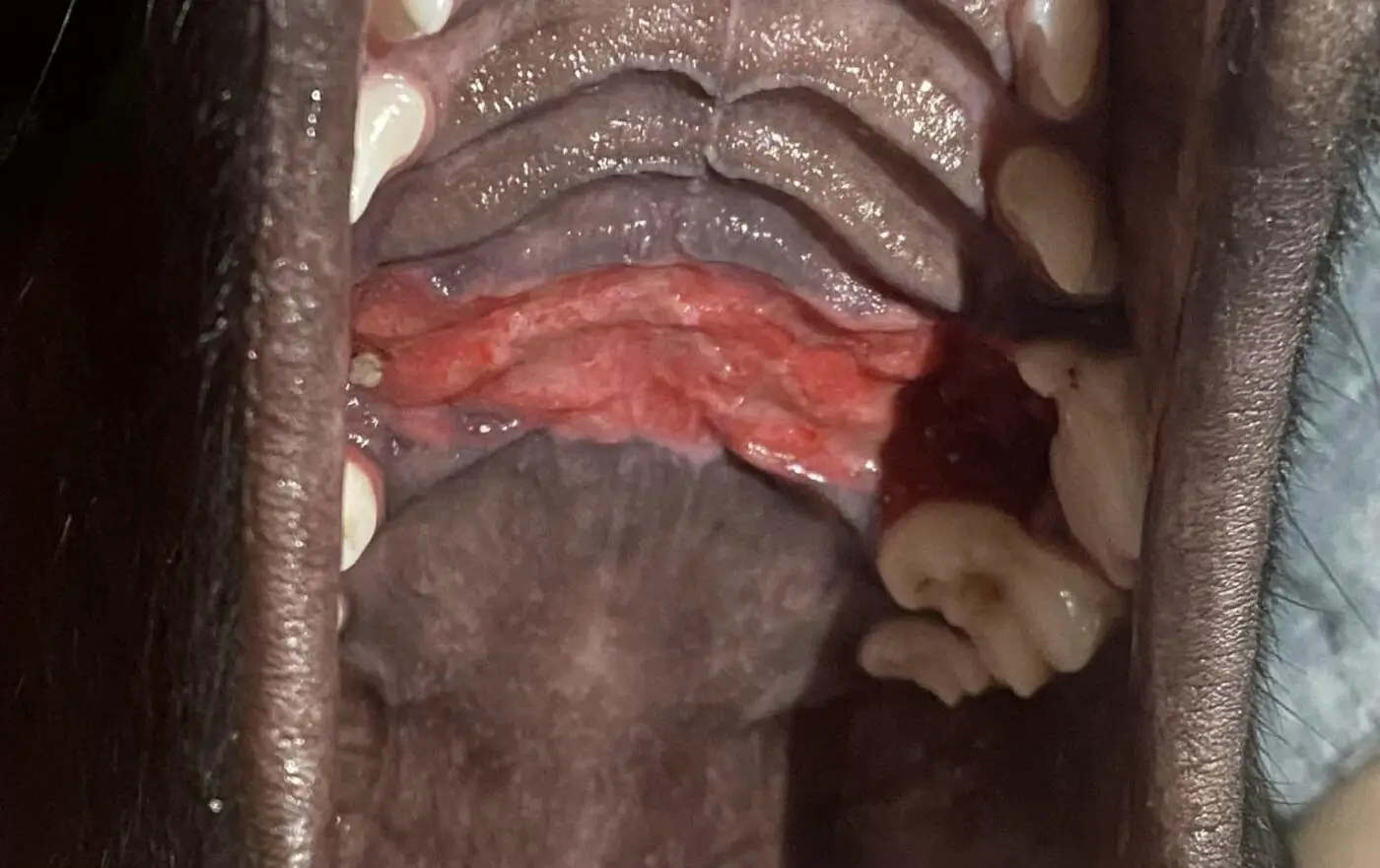
When your dog ingests wood and begins to vomit, it’s crucial to quickly assess the situation.
This includes identifying what type of wood was eaten, how much was consumed, and any immediate symptoms your dog is displaying.
It’s also important to consider any pre-existing health conditions your dog may have that could complicate the situation.
Immediate Actions
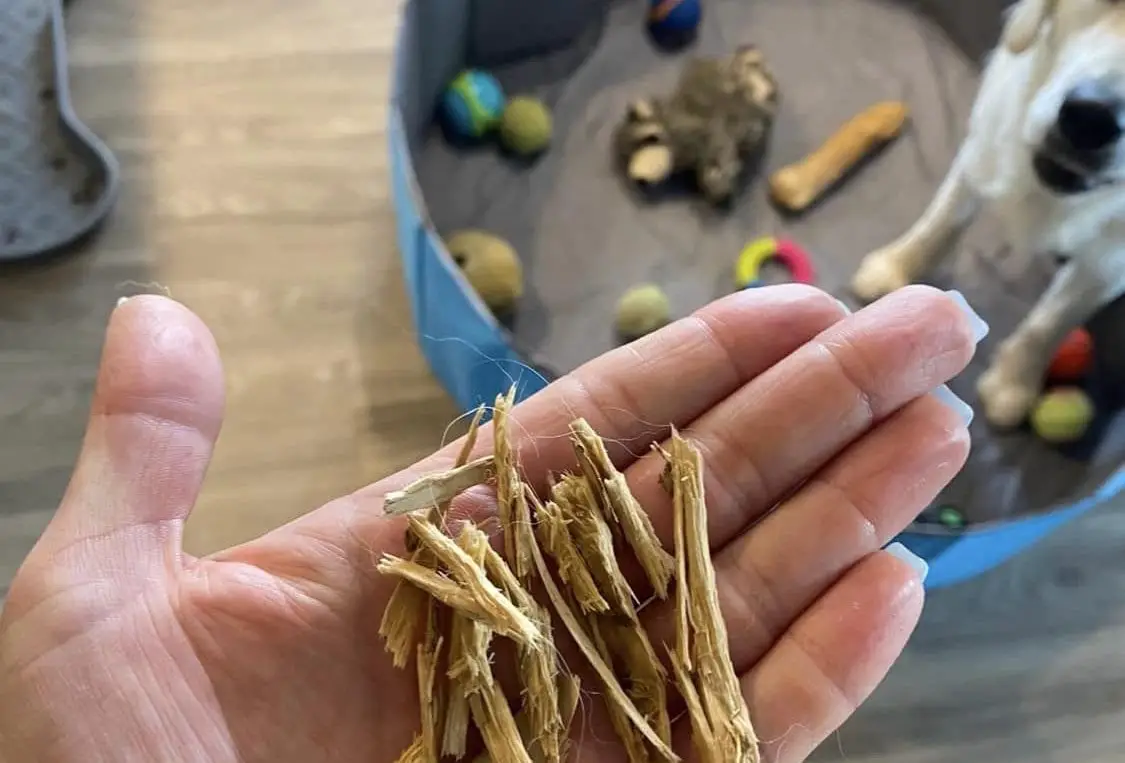
If your dog is throwing up after eating wood, you should withhold food for 12-24 hours. This gives the dog’s digestive system a chance to recover.
However, ensure that water is readily available to keep them hydrated.
Once the initial period has passed, reintroduce food slowly, starting with a bland diet of boiled chicken and rice in small amounts several times a day.
Keep Calm
While it’s natural to panic in such situations, keeping calm is crucial for both you and your dog.
Your calm demeanor can help keep your dog relaxed and make the situation easier to manage.
Check for Immediate Dangers
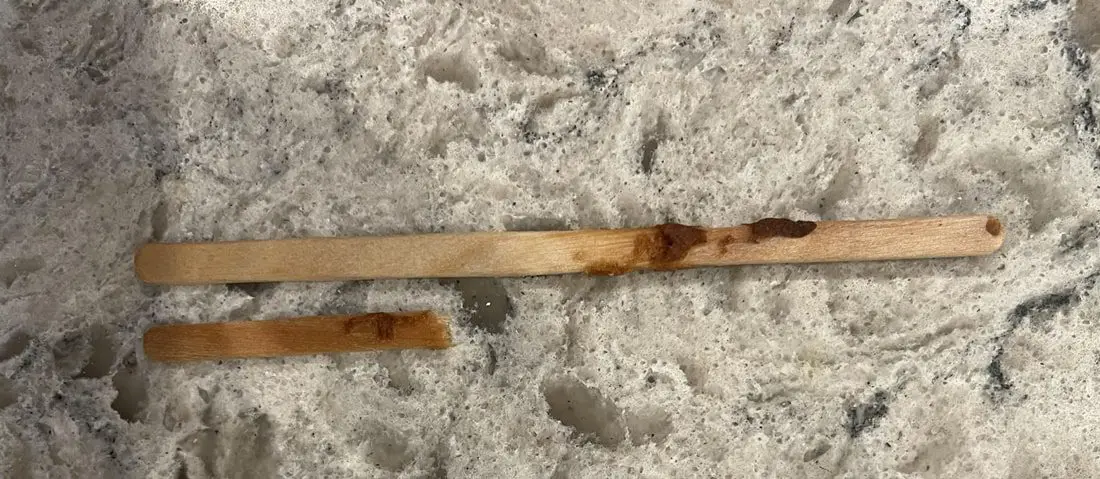
Inspect your dog’s mouth and body for signs of injury. Be careful not to get bitten if your dog is in pain or scared.
In my practice, I’ve seen cases where dogs had splinters lodged in their gums or tongue after chewing on wood.
Monitor Your Dog’s Symptoms

When your dog has ingested wood and is throwing up, keeping a close watch on their behavior and any changes can provide vital information about their condition.
You’ll want to look out for symptoms such as:
- Lethargy
- Loss of appetite
- Drooling excessively
- Difficulty defecating
- Changes in stool
These signs could indicate potential complications like blockages or injuries in the digestive tract.
Collect a Sample
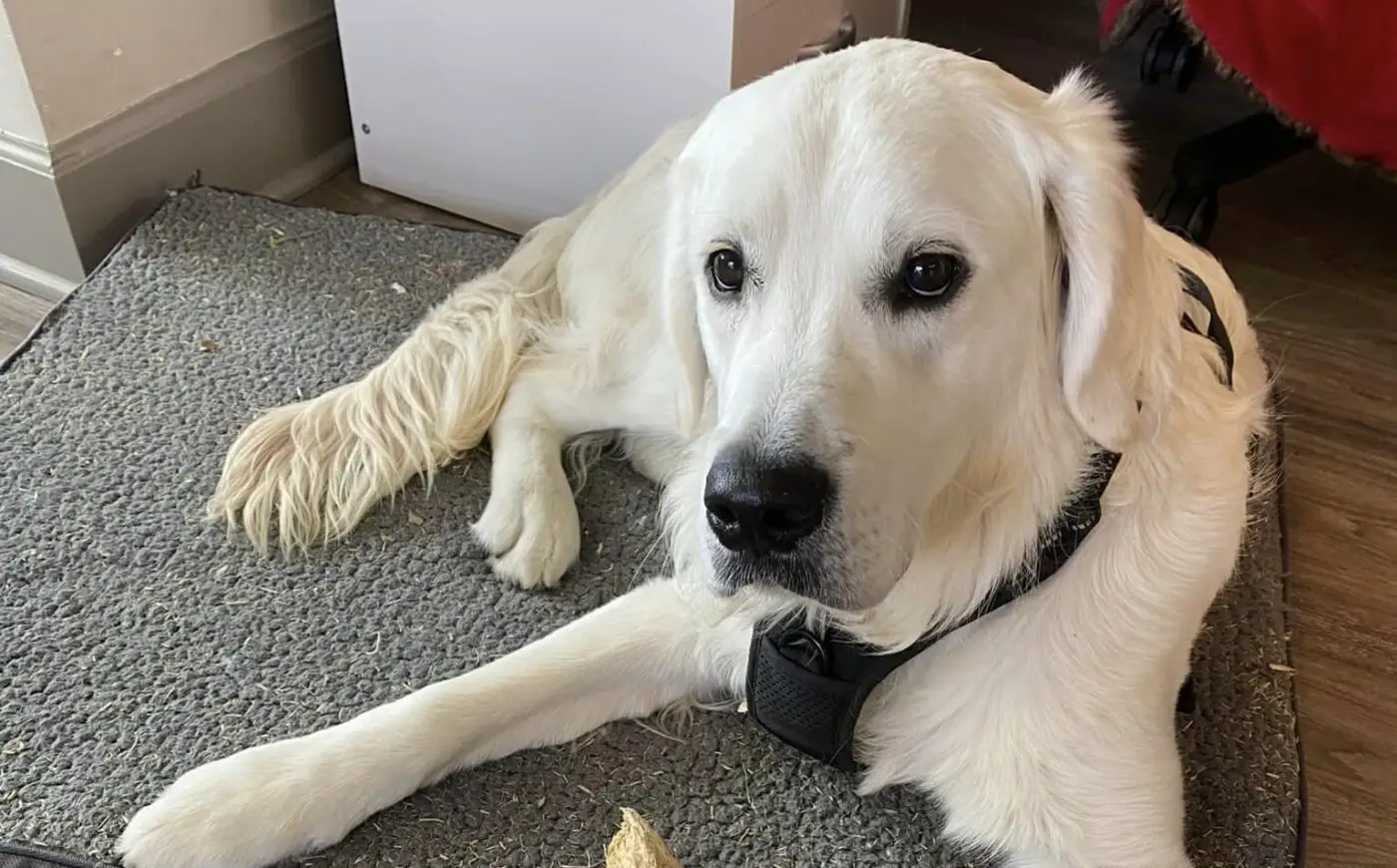
When your dog ingests something they shouldn’t, such as wood, and starts vomiting, it can be useful to collect a sample of the vomit and, if possible, the wood they consumed.
This can give the vet a clearer picture of what your pet has ingested, which could be crucial in diagnosing and treating any potential health issues.
For instance, in my practice, I had a case where a dog owner brought in a sample of the wood their pet had chewed on along with a sample of the vomit.
The wood was from a black walnut tree, which can be toxic to dogs.
Because the owner provided these samples, we were able to quickly identify the cause of the dog’s symptoms and begin appropriate treatment.
Prepare for a Vet Visit
When your dog has ingested wood and is vomiting, it’s essential to prepare for an immediate trip to the vet.
This preparation includes gathering any relevant information about the incident, such as what type of wood was eaten, when it was consumed, and the symptoms observed.
If possible, bring along a sample of the vomit or the wood for the vet to examine.
Observe and Support

Observing and supporting your dog after they’ve eaten wood, thrown up, and visited the vet involves monitoring their recovery, adhering to the vet’s instructions, and providing a comfortable environment for them to recuperate.
After a visit to the vet, it remains crucial to continue observing your dog’s behavior and supporting their recovery.
Monitor your pet for any changes in their condition, such as recurrence of vomiting or signs of discomfort.
Stick to the treatment plan provided by the vet, whether it involves administering medication, dietary changes, or rest.
Follow-Up Care
Once your dog has been treated by a vet for ingesting wood and vomiting, it’s vital to stick to the follow-up care plan provided.
This often includes administering prescribed medication, sticking to dietary recommendations, and restricting activities as advised by the vet.
Additionally, it’s crucial to schedule and attend any recommended follow-up appointments.
These visits allow the vet to assess your dog’s recovery and make any necessary adjustments to the treatment plan says WebMD.
Can a Dog Get Sick From Eating Wood?
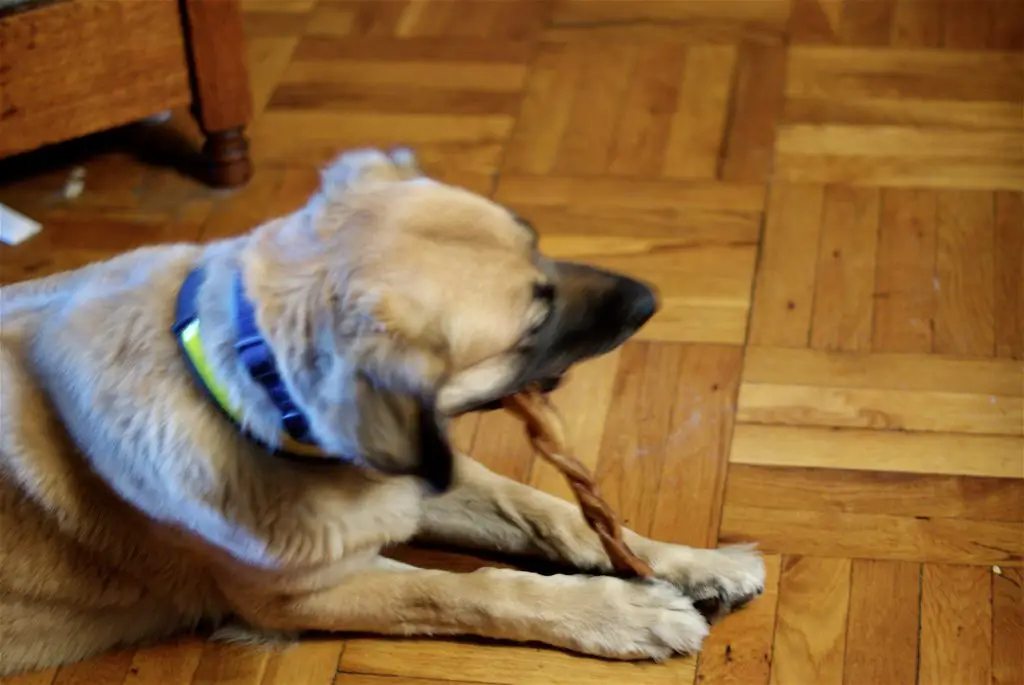
Yes, your dog can get sick from eating wood. Wood is not easily digested and can cause intestinal blockages or other gastrointestinal issues. If you think your dog has eaten wood, watch for signs of illness such as vomiting, diarrhea, lethargy, or decreased appetite.
Wood that is treated with chemicals is bad for dogs because the chemicals can be toxic if ingested.
Untreated wood is not as much of a concern, but it can still pose a choking hazard if your dog tries to eat it. Stick to dog-safe toys and chew bones made specifically for dogs to avoid any potential problems.
There are a few reasons that dogs may eat wood. Some dogs do it because they’re bored and have nothing else to chew on.
Others may do it because they’re trying to get attention from their owners. Some dogs may also eat wood out of curiosity or because they like the taste.
Whatever the reason, it’s important to make sure that your dog has plenty of other things to chew on so that they don’t damage their teeth or ingest any harmful chemicals as per Purina.
Should I Induce Vomiting if My Dog Ate Wood?
Inducing vomiting in a dog that has eaten wood is generally not recommended due to the risk of further complications, such as the wood splintering and causing internal damage during regurgitation.
While it might seem like a logical step to induce vomiting if your dog has ingested something potentially harmful like wood, this can be dangerous.
Wood pieces can be sharp and rigid, which means they could cause damage to your dog’s throat or digestive tract on the way back up.
In my experience as a vet, I’ve seen cases where attempting to induce vomiting in dogs that have swallowed wood has resulted in more harm than good.
The harsh reality is that sharp fragments can lacerate the esophagus, leading to severe complications.
Instead, it’s best to monitor your dog closely for signs of distress, such as vomiting, lethargy, loss of appetite, or changes in stool.
If you notice these symptoms, or if your dog has swallowed a large piece of wood, take them to the vet immediately.
Your vet may need to conduct an examination or tests like X-rays to determine the best course of action says WagWalking.
Can Dog Poop Out Wood?
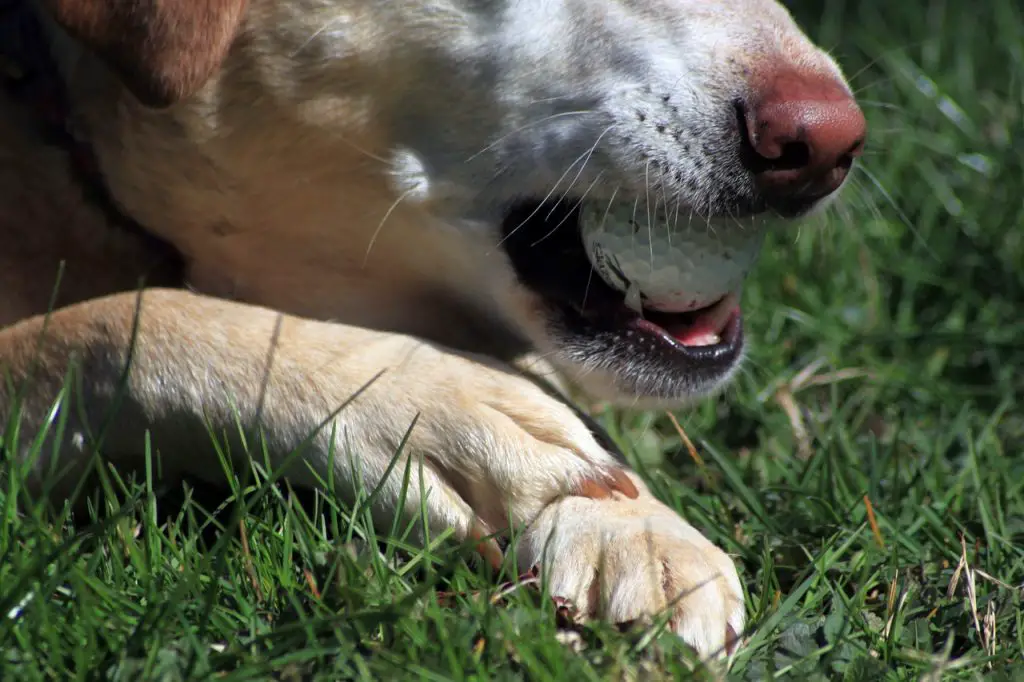
In general, most dogs can poop out small pieces of wood or wood shavings. Eating small amounts of wood is generally not harmful. However, eating large amounts can cause problems such as gastrointestinal blockages.
Depending on the age and the breed of the dog, as well as the type of wood they have consumed, most dogs will pass wood within 24 hours.
If your dog ingests a large piece of wood, it may take them longer to pass it through their system. The key here is for the wood not to cause any damage to the mouth, throat, and intestines of the dog.
If your dog ate something he shouldn’t have, the first thing you should do is call your veterinarian. They will be able to tell you what, if any, next steps need to be taken. If your dog is showing signs of distress, such as vomiting or diarrhea, it is important to seek medical attention right away.
Once you have contacted your veterinarian, they will likely recommend one of two options: inducing vomiting or giving your dog a laxative. Inducing vomiting may be recommended if the object ingested is small and not sharp. Giving your dog a laxative may be recommended if the object ingested is large or sharp.
No matter which route you take, it is important to follow your veterinarian’s instructions carefully and monitor your dog closely as per Native Pet.
Can a Dog’s Stomach Acid Dissolve Wood?

No, a dog’s stomach acid cannot dissolve wood. Dogs are not able to digest or break down the cellulose found in wood.
This means that when they eat wood it passes through their digestive system without being broken down and can cause an upset stomach or other health problems.
To prevent this from happening, dogs should be monitored closely when around wood chew toys or sticks and provided with plenty of edible chews and treats instead.
So, while it’s clear that a dog’s stomach acid is strong enough to break down food, it does not have the power to dissolve wood says The Farmers Dog.
What Is a Dog Lacking If They Eat Wood?
A dog that consistently eats wood may be displaying signs of a condition known as pica, which is driven by nutritional deficiencies, boredom, or health issues.
Nutritional Deficiencies
From my experience as a veterinarian, I’ve noticed that some dogs who eat non-food items like wood might be doing so due to nutritional deficiencies.
They might be trying to supplement their diet with missing nutrients or fiber. If the dog’s regular diet is lacking in essential vitamins and minerals, it might resort to eating wood.
In such cases, I usually recommend a comprehensive check-up and possibly a diet adjustment to ensure the dog is getting all the required nutrients.
Boredom or Anxiety
Another common reason I’ve seen dogs eat wood is due to boredom or anxiety. Dogs are naturally curious creatures and require physical and mental stimulation.
Without these, they can resort to destructive behaviors such as chewing on objects around them, including wood.
As a remedy, I often suggest more playtime, walks, or even puzzle toys that can keep them mentally engaged.
Health Issues
Lastly, underlying health issues may also cause a dog to eat wood.
For instance, I’ve treated dogs with conditions like diabetes and thyroid problems that led to unusual eating habits, including consuming wood.
These conditions can cause increased appetite, leading dogs to eat indiscriminately.
It’s crucial to consult a vet if you suspect your dog’s wood-eating habit is due to an underlying health issue.
Regular health checks can help spot and address these problems early says Hill’s Pet.
FAQs
Q: What are the symptoms of a dog who ate wood?
A: The symptoms of a dog who ate wood may include vomiting, diarrhea, abdominal pain, lack of appetite, lethargy, and difficulty defecating. If your dog is displaying any of these symptoms, it is important to consult with a veterinarian as soon as possible.
Q: Can wood be dangerous if ingested by dogs?
A: Yes, wood can be dangerous if ingested by dogs. Depending on the size and type of the wood, it can splinter in the digestive tract and cause obstructions or lacerations. This can lead to serious health issues and may require surgical intervention.
Q: What will the vet do if my dog ate wood?
A: The vet will likely perform a physical examination and may recommend X-rays or other imaging tests to assess if there are any obstructions or injuries caused by the ingested wood. Treatment options may vary but can include medication, surgery, or a combination of both.
Q: How long does it take for symptoms to appear if a dog ate wood?
A: The time it takes for symptoms to appear after a dog has eaten wood can vary. It may take a few hours to a couple of days for symptoms like vomiting or diarrhea to manifest. However, it is important to seek veterinary attention regardless of the presence or absence of symptoms.
Q: Can a dog pass wood naturally if they ate it?
A: It is possible for a dog to pass small pieces of wood naturally, but larger or splintered pieces can cause obstructions or internal injuries. It is always better to seek veterinary attention to assess the situation and ensure the safety and well-being of your dog.
Q: How can I prevent my dog from eating wood?
A: To prevent your dog from eating wood, it is important to provide them with appropriate chew toys and objects to satisfy their natural urge to chew. Supervise your dog when outdoors to prevent them from chewing on sticks or other wooden objects. Training and redirection techniques can also be helpful.
Q: Are there any risks of complications if a dog ate wood?
A: Yes, there are risks of complications if a dog ate wood. These complications can include gastrointestinal obstructions, internal injuries, infection, and other related health issues. It is crucial to seek veterinary attention to identify and address any potential complications.
Q: Can my dog’s breed affect the risk of complications if they ate wood?
A: Certain dog breeds may have a higher risk of complications if they ate wood, especially those with a tendency to swallow objects or have sensitive digestive systems. However, any dog can potentially experience complications from ingesting wood, regardless of their breed. It is important to always monitor your dog and take appropriate precautions to prevent them from ingesting harmful objects.
Conclusion and final thoughts
If your dog has eaten wood and is throwing up, it is important to take them to the vet as soon as possible.
The vet can determine if there are any serious underlying health issues that need to be addressed. In the meantime, you should avoid giving your pet anything else until they have been seen by a vet.


